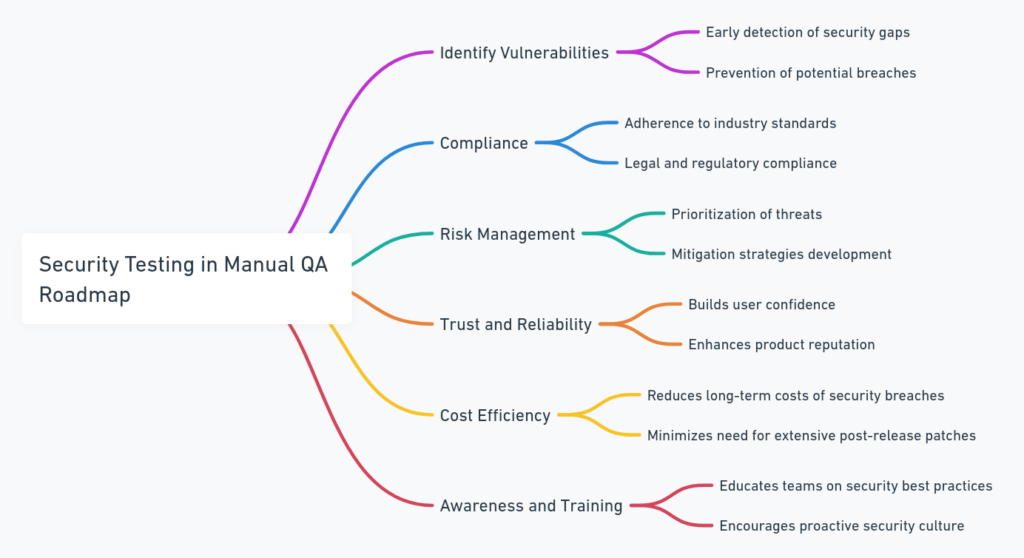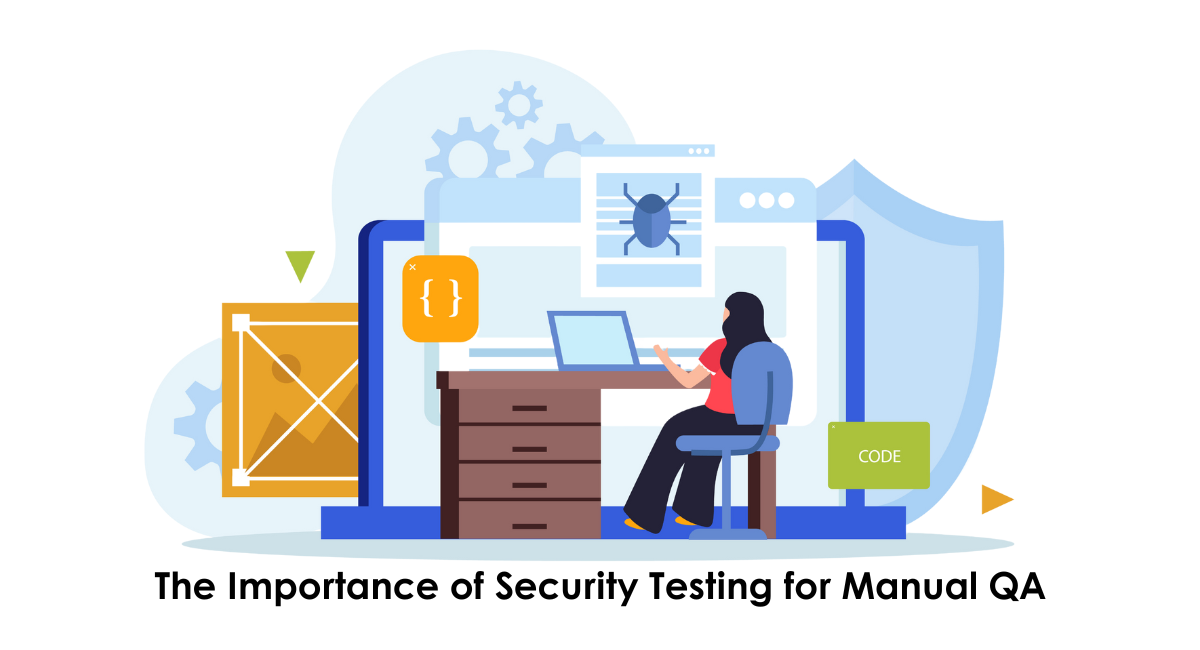Manual Quality Assurance (QA) testers play an essential function in identifying any weaknesses that automated testing could miss. This is why it is important to including security testing for manual QA procedure.
In this way, companies can ensure that their software is not just user-friendly and functional however, they are also protected against potential security threats.
Manual security testing of software for QA is a deliberate effort to assess and improve security in software and provide an additional level of security that the software is protected from modern security threats.
This method not only safeguards users' data but also safeguards the integrity and credibility of the software and is an important aspect in this digital age.
Importance of Security Testing for Manual QA
Overview of Security Testing
Security testing is an essential element of ensuring your software application is safe and reliable. They are also free from weaknesses that can have been exploited and exploited by malicious organizations.
It is the process of testing components of the system in order to discover any weaknesses or flaws which could lead to security breaches.
Security testing is a way of protecting sensitive data, protecting the privacy of users, and also making sure that the system is in compliance with regulations.
Its significance in the world of Manual Quality Assurance (QA) cannot be overemphasized, since it assures that security measures are properly applied and in place before the product is delivered to users.
Role of Manual QA Teams
The function that Manual QA teams in security testing is vital. Although technology for automated testing of security are available however, they can't substitute for the experience and insight that testers from the human perspective provide to the test.
Human QA teams are responsible for developing and running tests that reflect an array of scenarios for attack that can be executed by humans.
Their job is not just discovering vulnerabilities, but also comprehending the context of possible threats that allows for an individualized approach to security.
They help ensure that security controls aren't only robust in theory, but practical under the real world situations.
Manual testers are essential in educating developers about security best practices and the most common security vulnerabilities to be aware of in the process of developing.
Common Security Testing Techniques
Penetration Testing
Testing for penetration, also known as pen testing is a proactive and legally authorized test to determine security measures of an IT infrastructure by attempting to exploit vulnerabilities in the system such as OS flaws in applications, OS and insecure configurations.
When it comes to manual testing tests, penetration tests are carefully designed and carried out by testers who simulate the actions of attackers who could be able to attack.
They employ this method to discover weaknesses in security that could be exploited by hackers. Penetration testing can help organizations comprehend the degree of risk caused by hardware and software weaknesses in real-world attack scenarios.
Vulnerability Scanning
Vulnerability scanning is yet another important method in our arsenal of testing security techniques. It uses automated tools to check networks, systems or programs for weaknesses.
Although it is mostly automatic tools, manual quality assurance also plays an important role in understanding results of scans, confirming results, and separating fake positives from real threats.
This oversight by hand ensures the emphasis is placed on the security vulnerabilities that pose a major threat to security of the system.
Security Audits
Security audits are thorough tests that evaluate the security of an organization's policies and procedures, as well as the design and its implementation.
In contrast to penetration testing and vulnerability scanning security audits are more comprehensive and typically founded on established standards and guidelines like those in the ISO 27001 or NIST.
Manual QA teams assist by carefully going over and scrutinizing the document procedures and policies against these standards to spot any ambiguities.
They also audit manually the implementation and configuration of the system in order to verify that it is in line with standards for security, thus making sure that the system isn't only secure in design, but also in actual.
Benefits of Security Testing in Manual QA

Security testing, which is an integral component of Manual QA (Quality Assurance) plays a vital function in ensuring the security and reliability of software.
While automated testing does have advantages however, the human perspective and judgement that manual testing/QA can bring to the table is irreplaceable, particularly in the field of security testing.
Let's look at the benefits in incorporating security-related testing into manual QA practices.
Early Detection of Vulnerabilities
One of the biggest advantages of conducting security testing through manual testing is the rapid detection of weaknesses. Manual testers, thanks to their in-depth knowledge of software and the environment in which it operates are adept at identifying security vulnerabilities that may be elude automated systems.
These vulnerabilities, which range from minor flaws to major holes, could cause unauthorized access to the system or data leaks.
Finding and fixing these vulnerabilities during the early stages of development can greatly reduce the risk of exploitation, and protect the software from any security risks.
Improved Data Protection
In a time when data breaches are more and more common and can cause significant damage to reputation and financial loss protecting data is essential for any business.
Security testing performed in manual QA is a crucial element in this respect. Manual testers use security testing methods to test the software's capability to safeguard the data and make sure that sensitive data is properly secured and protected from unauthorised access.
This proactive approach is not only helpful to safeguard the company's data but it also ensures the compliance with regulatory and legal standards regarding the protection of data.
Enhanced Customer Trust
The importance of trusting your customers cannot be overstated in the current highly competitive business world. The likelihood of customers to interact with applications they believe to be safe and reliable.
Testing security in manual QA aids in establishing and maintaining trust by making sure that the application is not afflicted of vulnerabilities which could compromise the user's data.
If customers are aware that a company is serious about security this creates a feeling of trust and loyalty to the company's reputation which is crucial to grow and sustain the company.
Challenges in Security Testing for Manual QA

Although it is important and importance, security testing for manual QA has its own issues. These obstacles can hinder the efficiency and effectiveness of the procedure.
Understanding these challenges is vital in determining strategies to over come these challenges.
Limited Resources
One of the biggest problems in implementing security tests for manual quality assurance is shortage of resources. Security testing demands not only specific skills, but also more work and time.
Many companies, particularly small and medium-sized companies might not have security experts on the QA teams. The lack of experience can make it difficult to evaluate and reduce weaknesses, which could leave software vulnerable to security risks.
Time Constraints
Another issue is the restrictions that are imposed by timelines for projects. Security testing is a thorough procedure that requires attentiveness to the smallest of details.
However manual QA teams are often working with tight deadlines, making difficult to conduct thorough security tests. Speeding to complete the process of security assessment could lead to a lack of awareness of crucial security vulnerabilities, which defeats the goal of the process.
In balancing the need to conduct thorough testing of security while also balancing the urgency to meet deadlines is a constant challenge to the manual QA teams.
Best Practices for Effective Security Testing
Security testing is an essential aspect in making sure the reliability and security of software. When implementing a number guidelines, companies can reduce the risks that are associated with security weaknesses.
Here are a few best methods to take into consideration.
Regular Training for QA Teams
A regular training program for QA teams is essential to equip them with the most recent security testing methods and understanding of the latest security threats.
- Continuous education should incorporate periodic updates on new methods, tools and techniques for security testing as well as the most current security trends.
- Seminars and workshops conducted by security experts will provide useful insights into the real-world scenario.
- Simulations of security breaches can assist QA professionals better understand the subtleties of different attack methods and the importance of having strict security procedures.
Through fostering a culture of continual education, QA teams can stay clear of cyber attacks and ensure that the program they are testing is as safe as it can be.
Partnership with Security Experts
The difficulty of security testing typically requires special knowledge that goes beyond the normal scope of QA tasks. Collaboration with security experts can provide many advantages:
- Security professionals can aid with manual QA teams to comprehend and implement the latest methods of security testing.
- They may provide insight into the mind-set of hackers, allowing QA teams to anticipate and reduce the risk of vulnerabilities.
- This collaboration will streamline this process and provide the most thorough evaluation of the security capabilities of software.
Regular gatherings as well as joint sessions for training create a supportive environment in which information and best practices can be readily shared.
Automation of Security Tests
While manual QA plays an important role for security testing incorporating automation will increase the effectiveness and coverage.
- Automated security testing tools are able to perform repetitive tasks fast and precisely and accurately, allowing QA professionals to concentrate on more complicated testing scenarios.
- The tools be continuously running on the background and detect security holes in real-time.
- Automation assists to ensure that testing protocols are consistent and ensures that each aspect of software has been regularly tested for security vulnerabilities.
It's also important to be aware that automation is meant to complement and not replace analytical thinking and critical thinking that are provided by skilled QA experts.
Book a Demo and experience ContextQA testing tool in action with a complimentary, no-obligation session tailored to your business needs.
Conclusion
Security testing is an essential component of manual QA which aims to detect and eliminate vulnerabilities that could be present as well as ensure that software is protected from various dangers.
It is vital to safeguard the security, integrity, and accessibility in software. Implementing rigorous security testing processes aids in the proactive handling of security issues, which could protect organizations from reputational and financial damage as well as legal problems.
As technology evolves and cyber-attacks become increasingly sophisticated it is imperative to incorporate the security test into existing manual QA processes is not overstated.
In this way, companies are able to maintain the trust of their customers by providing safe and reliable software that is solid against attacks from malicious hackers.
In the end, although manual QA is the foundation for ensuring the quality of software and security, the inclusion of security testing is crucial to ensuring complete protection and long-term viability.
We make it easy to get started with the ContextQA tool: Start Free Trial.
